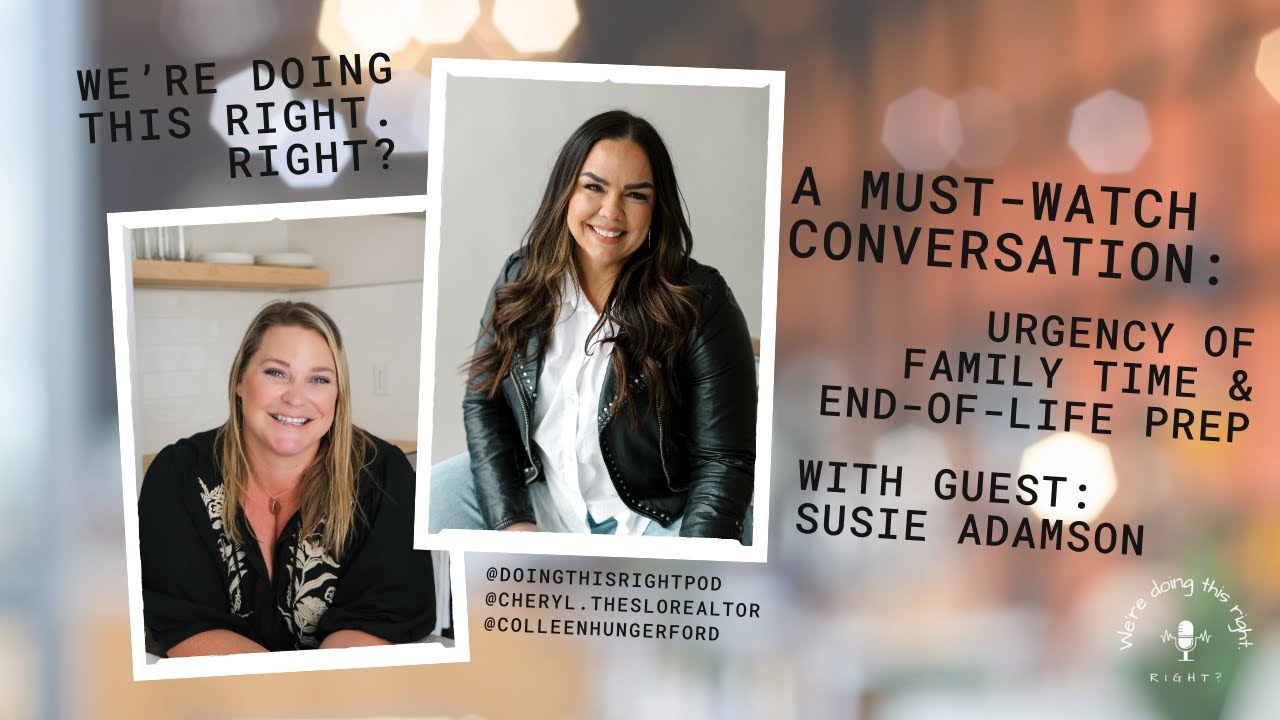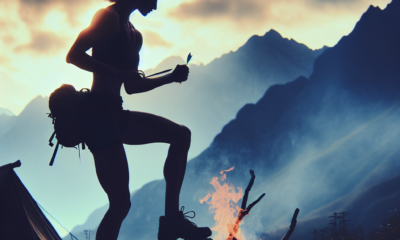Womens Preparedness
7 Essential Skills Every Wilderness Survivor Needs to Know

Hello ladies, Jade Tripp here, your go-to expert in women’s self defense, personal protection, preparedness, and prepping. Today, I want to talk to you about the 7 essential skills every wilderness survivor needs to know. Whether you’re planning a camping trip, a hike in the mountains, or just want to be prepared for any unexpected outdoor situations, these skills are crucial for your safety and survival.
1. Fire Starting: One of the most important skills to know in the wilderness is how to start a fire. Fire can provide warmth, cook food, and signal for help in emergency situations. Practice using different methods such as a lighter, matches, or even primitive methods like a fire bow.
Real-life example: Sarah, a hiker in Colorado, got lost in the wilderness and used her fire starting skills to stay warm until rescuers found her the next day.
2. Navigation: Knowing how to navigate in the wilderness is key to finding your way back to safety. Learn how to use a map and compass, as well as natural signs like the sun, stars, and landmarks. Practice navigating in different terrains to build your skills.
Real-life example: Emily, a backpacker in Alaska, used her navigation skills to find her way back to the trail after getting off course during a storm.
3. Shelter Building: In case of an emergency, knowing how to build a shelter can protect you from the elements and keep you safe. Learn how to make a simple lean-to or debris hut using natural materials you find in the wilderness.
Real-life example: Jessica, a camper in Montana, built a shelter out of branches and leaves when her tent got destroyed in a storm.
4. Water Purification: Staying hydrated is essential for survival, but drinking contaminated water can make you sick. Learn how to purify water using methods like boiling, filtration, or chemical treatments to ensure it’s safe to drink.
Real-life example: Maria, a trekker in Africa, purified water from a river using a portable filter and avoided getting sick during her trip.
5. First Aid: Accidents can happen in the wilderness, so knowing basic first aid skills can save lives. Take a wilderness first aid course to learn how to treat injuries like cuts, burns, sprains, and bites until help arrives.
Real-life example: Taylor, a rock climber in Utah, used her first aid training to bandage a fellow climber’s finger after he got cut on sharp rocks.
6. Food Foraging: In a survival situation, knowing how to find edible plants, fruits, and insects can provide you with much-needed nutrition. Familiarize yourself with local flora and fauna, and always be cautious when foraging for food.
Real-life example: Olivia, a backpacker in California, found wild berries and mushrooms to supplement her food supply while lost in the wilderness.
7. Self-Defense: Last but not least, knowing how to defend yourself in the wilderness is crucial for your safety. Learn basic self-defense techniques, carry a personal protection tool like pepper spray, and always be aware of your surroundings to avoid dangerous situations.
Real-life example: Samantha, a solo hiker in Oregon, used her self-defense skills to fight off a wild animal that threatened her during a hike.
Remember, being prepared is the key to surviving in the wilderness. Practice these essential skills, stay vigilant, and never underestimate the power of being knowledgeable and resourceful in outdoor situations. Stay safe out there, ladies!
Womens Preparedness
The Benefits of Sustainable Living: How It Can Improve Both Your Life and the Environment

As an expert in women’s self-defense, personal protection, preparedness, and prepping, I am excited to share with you the numerous benefits of sustainable living and how it can greatly improve both your life and the environment.
Sustainable living is all about making choices that are good for the planet, as well as for ourselves. By adopting a sustainable lifestyle, we not only reduce our carbon footprint and help protect the environment, but we also create a healthier and more fulfilling life for ourselves.
One of the key benefits of sustainable living is improved health. By choosing to eat organic, locally sourced foods and products, we are reducing our exposure to harmful chemicals and pesticides. This can lead to better overall health and well-being, as well as a reduced risk of chronic diseases.
For example, take Sarah, a working mother who made the switch to organic produce and sustainable products for her family. Not only did she notice an improvement in her own health and energy levels, but her children also experienced fewer allergies and illnesses. By making small changes to her lifestyle, Sarah was able to create a healthier environment for her family and protect them from potential health risks.
In addition to improved health, sustainable living can also lead to financial savings. By reducing waste, recycling, and reusing items, we are able to save money on everyday expenses. This can provide a sense of financial security and stability, as well as reduce stress and anxiety about money.
Take Jessica, a single woman who decided to start a zero-waste lifestyle. By shopping at bulk stores, repurposing items, and reducing her overall consumption, Jessica was able to save hundreds of dollars each month. This financial freedom allowed her to pursue her passions, travel more, and live a more fulfilling life.
Furthermore, sustainable living can also help us feel more connected to our communities and the world around us. By supporting local businesses, participating in community gardens, and volunteering for environmental causes, we can create stronger social connections and a sense of purpose.
For example, consider Maria, a retiree who became actively involved in her local environmental group. By attending meetings, organizing clean-up events, and educating others about sustainable living practices, Maria found a sense of fulfillment and purpose in her life. She also made new friends and connections who shared her values and passions.
In conclusion, sustainable living offers a multitude of benefits, from improved health and financial savings to a greater sense of community and purpose. By making small changes to our lifestyle and habits, we can create a better world for ourselves and future generations. I encourage all women to embrace sustainable living and experience the positive impact it can have on both our lives and the environment. Together, we can make a difference and create a brighter, more sustainable future for all.
Womens Preparedness
Susie Returns: Navigating Middle Age, Aging Parents, and End-of-Life Preparedness

The Urgency of Family Time and Preparing for End-of-Life: A Candid Conversation In this heartfelt episode, Cheryl, Colleen and …
source
Womens Preparedness
Single & Self-Sufficient: The Feminist Movement in Homesteading
Title: Single & Self-Sufficient: The Feminist Movement in Homesteading
Hello fellow women warriors! Today, I want to talk to you about the empowering movement of homesteading and how it intersects with feminism. As a certified expert in women’s self-defense, personal protection, and preparedness, I believe that homesteading is not only a way to connect with nature and live a simpler life, but also a powerful form of self-sufficiency that can empower women in a patriarchal society.
First and foremost, let’s break down what homesteading actually is. Homesteading is essentially the act of living off the land, growing your own food, raising your own animals, and becoming self-sufficient in all aspects of life. While this lifestyle may seem daunting at first, it is actually a perfect fit for women who are looking to break free from societal norms and establish their own independence.
One of the key reasons why homesteading and feminism go hand in hand is the emphasis on self-sufficiency. By learning how to grow your own food, raise your own animals, and build your own shelter, you are taking control of your own life and reducing your reliance on external sources. This empowerment resonates deeply with the feminist movement, as it challenges traditional gender roles and demonstrates that women are fully capable of providing for themselves.
Take, for example, the story of Sarah, a single mother who decided to move to a remote homestead in the mountains. Despite facing skepticism from her family and friends, Sarah was determined to live a self-sufficient lifestyle and show her daughter that women are capable of anything. Through hard work and determination, Sarah transformed her homestead into a thriving garden and livestock operation, providing a sustainable source of income for her family.
In addition to the practical benefits of homesteading, such as increased food security and reduced environmental impact, there are also mental and emotional benefits to be gained. By immersing yourself in nature and connecting with the land, you will find a sense of fulfillment and peace that is often lacking in our fast-paced, technology-driven world. This connection to the earth can be incredibly grounding and soothing, helping to combat the stresses and anxieties of everyday life.
So, my fellow sisters, I encourage you to explore the world of homesteading and discover the empowerment that comes with living a self-sufficient lifestyle. Whether you are a single woman looking to forge your own path or a mother wanting to instill independence in your children, homesteading can be a powerful tool for self-empowerment and feminist expression. Embrace your inner strength, tap into your resourcefulness, and take control of your own destiny – the homesteading journey awaits you!
-

 Womens Self Defense9 months ago
Womens Self Defense9 months agoNew Legislation Empowers Women to Defend Themselves
-

 Self Defense News1 year ago
Self Defense News1 year agoShe was convicted of killing her abusive boyfriend. Now a Maple Grove woman is home awaiting a new trial.
-

 Self Defense News1 year ago
Self Defense News1 year agoSelf-Defense for All: The new Gracie Jiu-Jitsu Pasadena is for everyone | Online Features
-

 Womens Fitness1 year ago
Womens Fitness1 year agoXtreme Bodyweight HIIT (Lots of Jumping!) | Joanna Soh (Fio Series)
-

 Womens Self Defense1 year ago
Womens Self Defense1 year agoTop 5 Self-Defense Techniques Every Woman Should Know
-

 Womens Self Defense5 months ago
Womens Self Defense5 months agoUnderstanding State-by-State Variation in Self Defense Laws
-

 Womens Preparedness1 year ago
Womens Preparedness1 year ago10 essential skills for surviving in the great outdoors
-

 Womens Preparedness1 year ago
Womens Preparedness1 year agoThe Importance of Self-Sufficiency Skills in Today’s World



